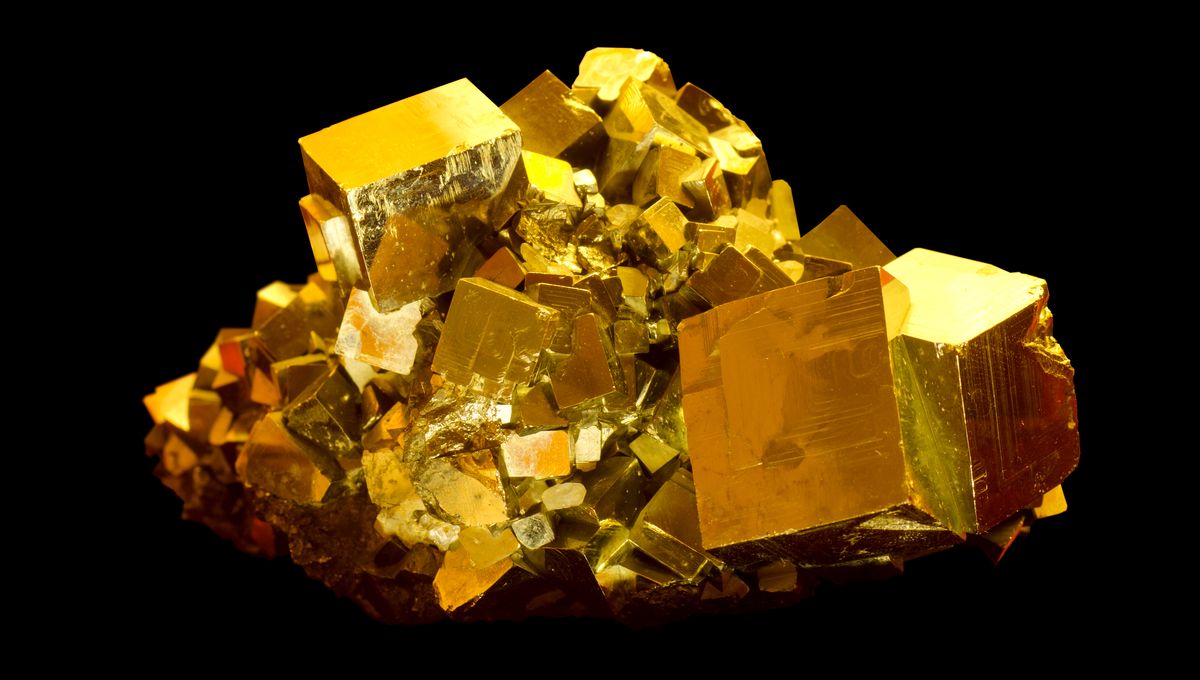
If you’re in the jewelry game, or a treasure hunter, you may be familiar with the term “fool’s gold”. Referring to the mineral pyrite, fool’s gold is named as such because of its uncanny resemblance to real gold. While gold is a valuable metal, its evil twin pyrite is virtually worthless, making cases of mistaken identity potentially very costly.
Pyrite is a common crystalline iron sulfide mineral that can be found as small crystals in soil and sediment. The mineral is formed through a reaction between sulfide and iron, and it can appear in gold, silver, chrome, and even rainbow colors.
Pyrite’s resemblance to gold and its accessibility makes it a prime gold replacement for more affordable pieces of jewelry and ornaments. The issue comes, however, when pyrite is bought or sold at the price of its gold equivalent.
So, how do you tell the difference between real gold and fool’s gold?
Destructive testing
If you’re not bothered about the structural integrity of your specimen, there are a number of destructive tests that can give you a pretty good idea of the material you’re dealing with.
Hardness
Using the Moh’s test, a scale used to identify a number of minerals based on which materials are able to scratch it, pyrite has a hardness score of 6 to 6.5, while gold scores 2.5. Copper, for example, with a Moh’s score of 3, will scratch gold but not pyrite.
Sectility
The material’s sectility refers to the ability to cut it with a sharp knife. Pyrite cannot be cut with a knife, whereas small portions of gold can be.
Ductility
This refers to how easily the material is bent. Under pressure, gold is malleable, making it easy to bend and dent without breaking. Pyrite, on the other hand, either won’t bend at all or will snap under pressure.
Streak
Using a streak test, a specimen is scraped across a sheet of unglazed porcelain known as a streak plate. The color of the powered residue left on the plate is the material’s “streak”. A yellow streak indicates gold, while a black, green, or brown streak would be pyrite.
Non-destructive testing
If you’d prefer to keep your potentially precious metal intact, non-destructive tests can be performed, but with somewhat less certainty.
Color
While the two look mostly identical in color, when comparing samples pyrite will appear slightly more brassy than pure gold. Gold found in nature can be alloyed with silver, giving it a more white undertone.
Shape
Gold is often found in bodies of water where the sharp edges are smoothed out by the current. Pyrite, however, tends to have a more angular shape. This test is somewhat unreliable, as the shape of the material will differ greatly depending on the conditions it’s found in.
Striations
Pyrite crystals will have lines running across the surface of the mineral, whereas gold will not.
Tarnish
With exposure to the natural environment, pyrite will easily show signs of tarnish on its surface, while gold will remain shiny and untarnished regardless of its exposure to the elements.
Specific gravity
The specific gravity of an object is its density divided by the density of water. Pyrite’s specific gravity is around 5, while gold’s is 19.3.
Magnetism
Gold is non-ferrous, meaning it’s not magnetic. Pyrite, however, is magnetic, as are some gold alloys.
Smell
Too add insult to injury for poor old pyrite, it also stinks like rotten eggs. When rubbed with an abrasive object, this offensive smell will be released from the mineral, while gold will give off no odor at all.
Feeling a bit sorry for stinky pyrite? While it makes a far less valuable gold substitute, it is used to create iron sulfate which is found in a number of everyday products. Iron sulfate can be found in ink, nutritional supplements, water treatment, and can be used to boost photosynthesis in plants making it an ideal lawn conditioner.
Source Link: How To Tell Real Gold From Fool’s Gold